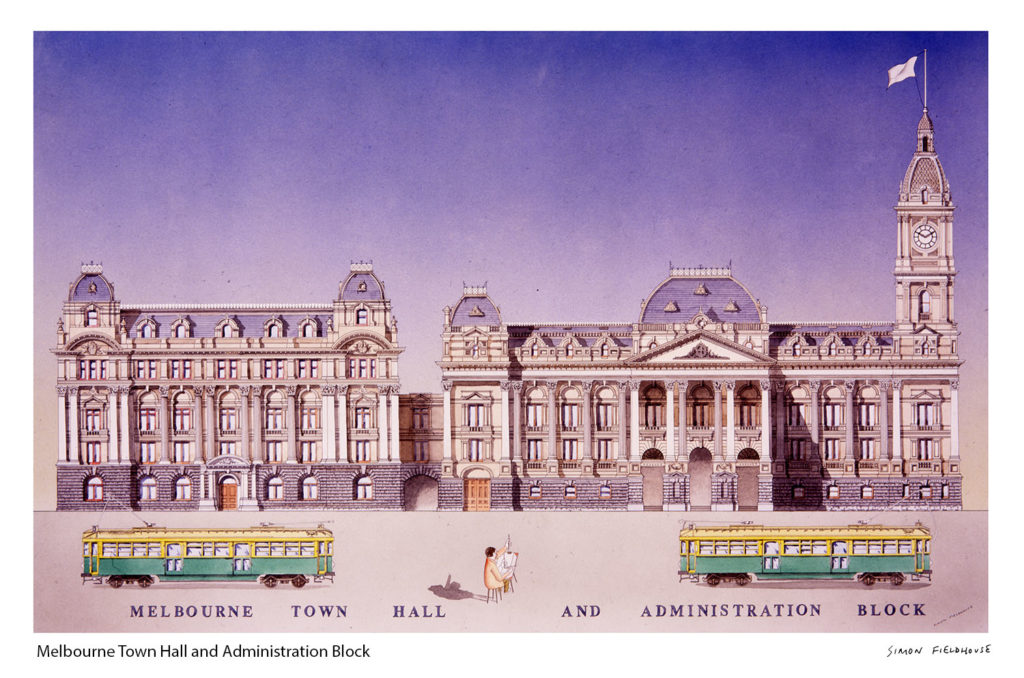
Melbourne Town Hall and Administration Block
Melbourne Town Hall and Administration Block: A Historic Icon of Civic Pride
Located in the heart of Melbourne's Central Business District, the Melbourne Town Hall stands as a resplendent testament to the city's rich history and unwavering civic pride. This magnificent building, with its grand architecture and historical significance, has been a focal point of Melbourne's cultural, political, and social life since its completion in 1870.
Designed by the famed architect Joseph Reed, the Melbourne Town Hall is a remarkable example of the Second Empire architectural style, characterized by its opulent decoration, mansard roof, and ornate facades. The exterior of the building is adorned with intricate stonework, including majestic columns and elaborate detailing, which lend the hall an aura of grandeur. Its iconic clock tower, standing at 103 meters, has long been a symbol of the city and a reference point for residents and visitors alike.
Beyond its aesthetic magnificence, the Melbourne Town Hall holds a special place in the city's history. It has witnessed significant events, political gatherings, cultural celebrations, and important milestones in Melbourne's journey. In its early years, the Town Hall played a pivotal role in shaping Melbourne's political landscape, hosting numerous public meetings and political debates. It was here that the first Australian federal parliament was held in 1901, marking a historic moment in the nation's democratic history.
The Town Hall has also been a vibrant cultural hub, hosting countless concerts, exhibitions, and cultural events. Its splendid Main Hall, with its grand organ and magnificent stained-glass windows, has been a stage for renowned musicians, orchestras, and artists. This venue has resonated with the melodies of some of the world's greatest musicians and composers, solidifying its position as a cherished cultural institution.
Moreover, the Melbourne Town Hall has consistently upheld its role as a venue for civic engagement and community gatherings. It remains the central point for many public announcements, ceremonies, and official functions. On a more personal note, countless couples have celebrated their weddings within its walls, reinforcing the building's status as a symbol of love and unity.
The Melbourne Town Hall also proudly houses the Melbourne City Council chambers, where local governance and decision-making have been taking place for over a century. It reflects the council's commitment to the city's residents and its dedication to preserving the hall's heritage and significance.
In conclusion, the Melbourne Town Hall is a quintessential embodiment of the city's character and history. Its remarkable architecture, cultural significance, and role in shaping Melbourne's political and social landscape make it an iconic symbol of civic pride. As it continues to evolve and adapt to the changing needs of the city, the Melbourne Town Hall remains a beloved landmark that stands as a testament to the enduring spirit of Melbourne and its commitment to preserving its rich heritage.
- Mansard Roof: One of the most distinctive features of the Melbourne Town Hall is its imposing mansard roof. This type of roof, characterized by its double slope with the lower slope being steeper than the upper one, is adorned with dormer windows and ironwork. The mansard roof gives the building a sense of grandeur and creates a dramatic silhouette, making the Town Hall easily recognizable from a distance.
- Ornate Facades: The exterior of the Melbourne Town Hall is a showcase of intricate stonework and ornate detailing. Elaborate cornices, decorative friezes, and pilasters are prominent features that adorn the building's facades. The use of stone, predominantly bluestone, adds to the architectural richness of the structure.
- Clock Tower: The iconic clock tower is the centerpiece of the Melbourne Town Hall's architecture. Rising to a height of 103 meters, it is crowned with a copper-clad dome and a prominent flagpole. The clock itself is an impressive timepiece, and its chimes can be heard throughout the city. The clock tower has become a symbol of Melbourne, visible from various points in the city and serving as a reference point for navigation.
- Stained-Glass Windows: The Melbourne Town Hall features magnificent stained-glass windows, including the stunning Great Hall windows. These intricate stained-glass designs are a work of art, allowing the play of colored light into the building and adding to its overall grandeur.
- Grand Main Hall: The interior of the Melbourne Town Hall is equally impressive. The Main Hall is a marvel of architectural design with its lofty ceilings, grand organ, and ornate decoration. The high windows, ornamental balconies, and intricate detailing create a sense of grandeur that is matched by few other venues in the city.
The Melbourne Town Hall's architectural significance extends beyond its aesthetic beauty. It reflects the historical context and aspirations of the city during the 19th century. As Melbourne was experiencing rapid growth and prosperity, the Town Hall was constructed to showcase the city's pride and ambitions. It represented a commitment to grandeur and civic achievement, which was typical of the period.
In conclusion, the architectural splendor of the Melbourne Town Hall is a visual feast that combines Second Empire design elements with a deep historical significance. Its exterior detailing, iconic clock tower, and the lavish interior spaces make it a lasting monument to Melbourne's past and present. This architectural gem continues to be celebrated not only for its historical value but also for its enduring beauty and cultural significance in the city's landscape.